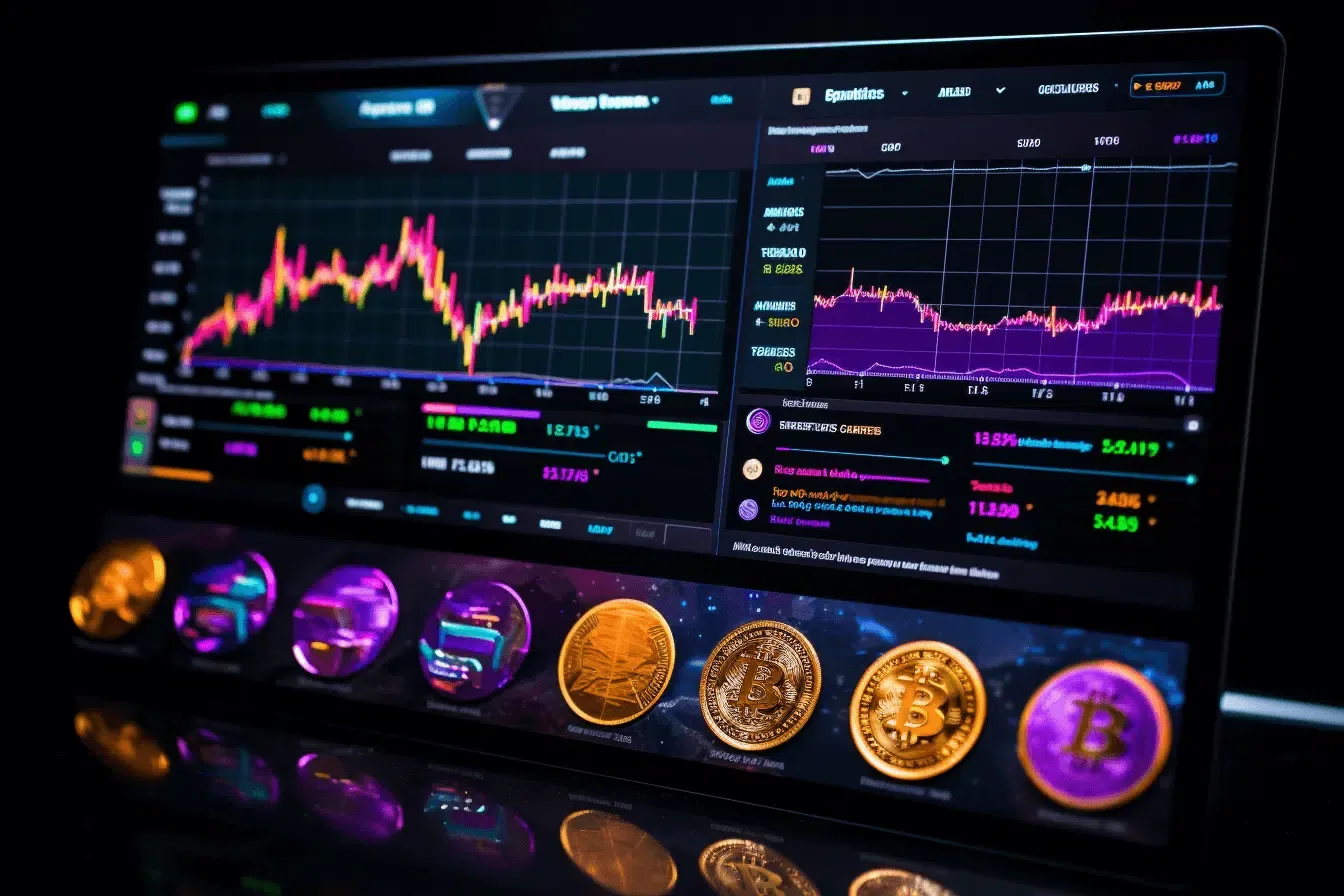Crypto Tools for Dummies: Unraveling the Mystery of Digital Currency
Kicked things off in crypto and hit a wall? You’re not alone. Dive deep with me, and let’s make sense of this digital dollar stuff together. We’ll start with the ABCs of blockchain and see just what these ‘coins’ are about. Then, we’ll pick out a wallet and find an exchange—think of them as your money bag and favorite mall. Ready to spend or make more coins? I’ll guide you from your first buy to pro trader moves. And for the tech-hungry, we’ll explore the wild side: smart money tricks and digital art that’s all the buzz. Stick with me, and those crypto tools for dummies will turn you into a sharp crypto whiz.
Understanding Cryptocurrency and Blockchain Basics
Demystifying Blockchain Technology Simplified
Blockchain is a safe way to keep records. Think of it as a digital ledger that’s hard to cheat. Every block is a record linked together in a chain. Each block has info about transactions. Once something is added, it can’t be changed. This makes blockchain reliable and secure.
Blockchain technology is at the heart of what makes crypto work. It is made up of blocks, and each block has a list of transactions. Imagine a block as a page of a ledger. When a block fills up with transactions, a new one is made, forming a chain.
Cryptocurrency for Beginners: A First Look
Now that you understand blockchain, let’s talk about cryptocurrency. Cryptocurrency is digital money. Unlike dollars or euros, it doesn’t have coins, or notes. It lives online. Cryptocurrency uses blockchain to move between people without needing banks. This makes it fast and cuts extra costs.
A key part of using cryptocurrency is a wallet. Not like the one in your pocket, but a digital one. Bitcoin wallets, for example, keep your crypto safe and let you send and receive it. There’s a lot to learn, but don’t worry. It starts to make sense as you use it.
Remember, whether it’s securing your crypto in a wallet or doing your first trade, the world of cryptocurrency is at your fingertips. With each small step, these digital wonders become a little less mysterious. Keep learning, and before you know it, you’ll be the one explaining blockchain and cryptocurrency to others!
Setting Up Your Crypto Toolkit: Wallets and Exchanges
Bitcoin Wallets Explained: Types and Security
Think of a crypto wallet like a safety box. Only you have the key. This box holds your digital coins. Bitcoin wallets come in two main types: hot wallets and cold wallets. Hot wallets connect to the internet. Cold wallets do not. They are safer but less handy.
Why choose one type over the other? Hot wallets are good for easy access and trades. But they face more risk online. Cold wallets, like hardware wallets, are offline. This makes them super secure for storing your crypto.
Always pick a good password for your wallet. A strong password blocks hackers. And keep your wallet’s backup code in a safe place. If you lose it, you lose your coins. That’s not fun at all.
Navigating Cryptocurrency Exchanges for New Users
Cryptocurrency exchanges are like digital marketplaces. You use them to buy and trade your digital coins. Picture a big online store full of different coins. Some exchanges also turn your coins into dollars or other cash.
Beginners should start with simple, user-friendly exchanges. These help you learn as you go. Look at fees and what coins they offer. Also, make sure they are secure. They should protect your info and your coins well.
Try small trades first to get the hang of it. This way, you learn without risking much. And always remember, prices can change really fast in crypto. So, keep an eye on that.
Learning crypto can be tricky. But with the right tools, it’s like building a cool Lego set. Each piece has its place. Soon, you’ll see the whole picture and how fun it can be!
Investing and Trading: From Novice to Savvy User
Crypto Investment Basics: Making Your First Purchase
Starting your crypto journey feels like riding a bike for the first time. There’s excitement and a bit of worry — are you doing it right? First, you’ll need a place to keep your digital coins. This is where a digital or bitcoin wallet comes in. Think of a bitcoin wallet like a digital bank account for your cryptocurrency.
So, what’s a simple way to buy some crypto? Use a crypto exchange. It’s like a market for digital money. Here, you can swap your dollars for bitcoins or other coins. Coinbase is a good place to start. Remember, buying crypto is not without risk. The value can go up or down. You might win, but you could lose, too.
Digital Currency Trading 101: Strategies and Risks
Now, let’s talk about making money with crypto. Trading digital currency is a way to do this. Picture buying a toy for $10 and selling it for $20. Trading crypto is similar. Buy at a low price. Sell it when the price is high. Sounds easy, right? Not so fast. The price swings can be wild! This means you have to be careful.
There’s something called day trading. It’s like a speed race with buying and selling. Some prefer it slow, like a turtle, and they hold on for years. This is called HODLing, a fun word in the crypto world. It means “Hold on for Dear Life.”
To play it safe, don’t put all your money in one coin. Spread it out. You don’t want all your eggs in one basket if it drops. And remember, there are risks. The crypto market can be a wild ride. Prices can swing wildly based on news, rumors, or big players’ moves.
In the end, get comfy with these tools—wallets, exchanges, and an eye on the markets. Keep what you need close, like your wallet with secure storage and a trusted exchange for trading. Knowing your tools is like knowing your bike. The better you know it, the smoother your ride will be. And who knows? You could go from a crypto dummy to a smart trader faster than you think.
Advanced Tools and Strategies for the Enthusiast
Intro to Decentralized Finance (DeFi) and Smart Contracts
Ever wonder how money works without a bank? It’s called DeFi, or decentralized finance. Imagine you are your own bank. You lend, trade, and earn money all on your computer. This is thanks to something called blockchain.
Let me break it down with “blockchain technology simplified.” Blockchain is a chain of blocks. But not the kind you stack or play with. These blocks hold records of every trade, payment, or deal you make. They link together to form a long history that’s tough to change.
Smart contracts are the brains of DeFi. They’re like computer programs that run on blockchain. These programs watch what’s happening and automatically do tasks when conditions are right. Say you bet your friend $10 it will rain tomorrow. A smart contract could hold that $10, then pay the winner after checking the weather.
Diving into NFTs for Novices and Crypto Mining Essentials
Now let’s talk NFTs or “non-fungible tokens.” Think of them like special collector’s items. But instead of holding a baseball card, you own a digital token. It’s a one-of-a-kind item that you can show off or sell online.
Many are part of the Ethereum platform. It’s a big space for DeFi and NFTs. Crypto artists and creators love it because it lets them sell their work in a new way.
What about “crypto mining for beginners?” Well, it’s not about caves or pickaxes. Think of it as a race to solve tough math puzzles. The first computer to solve it gets new cryptocurrency, like a prize. But watch out. It uses lots of power and can get pretty tricky.
These cool tools and tricks are part of your crypto journey. Use them right and you just might find treasure in this digital land!
We’ve gone through a lot, from blockchain basics to trading tips. First, we broke down how blockchain and crypto work. Think of blockchain as a digital ledger that’s super secure, where all crypto actions live. We then matched your crypto journey’s start with the right tools, like wallets and exchanges. Remember, wallets keep your crypto safe, and exchanges are where you trade.
Next, we tackled investing and trading. We covered how to start and what to watch for, aiming to turn you from beginner to smart trader. Let’s not forget the risks! Always think and act with care.
Finally, we hit the advanced stuff. DeFi and smart contracts can change how we use money, and NFTs and mining are making waves in the digital world. I hope you now feel ready to dive in and explore.
This world of digital cash and tech is fast and full — get in there and make your mark! Stay keen, learn heaps, and remember, in crypto, knowledge pays.
Q&A :
What are the basic crypto tools every beginner should use?
When just starting out in the world of cryptocurrencies, it’s important to equip yourself with a set of basic crypto tools. Beginners should familiarize themselves with reliable cryptocurrency exchanges for buying and selling assets, secure wallets for storing their digital currencies, portfolio trackers to monitor their investments, and price alert systems to stay updated on market conditions. Understanding how to use these tools effectively can help any newbie make more informed decisions in the crypto space.
How can I safely store my cryptocurrency as a beginner?
For beginners, safeguarding your cryptocurrency is of utmost importance. Start by choosing a reputable and easy-to-use cryptocurrency wallet, which can be either hardware-based or software-based. Hardware wallets are physical devices that store cryptocurrencies offline, offering strong security against online threats. Software wallets, on the other hand, are more accessible and come in the form of mobile or desktop applications. Always ensure to keep your private keys secure and consider using multi-factor authentication for additional security.
What is the simplest way to track my cryptocurrency portfolio?
The simplest way to track your cryptocurrency portfolio is by using an intuitive portfolio tracker app or website. These tools allow you to compile your trading and transaction data from different exchanges and wallets into one place, giving you a holistic view of your holdings, performance, and asset distribution. Look for portfolio trackers that offer a user-friendly interface and support for multiple cryptocurrencies and exchanges to streamline your investment tracking process.
Can I use crypto tools for dummies without any technical knowledge?
Yes, there are many crypto tools designed specifically for beginners that don’t require extensive technical knowledge. These tools generally have user-friendly interfaces and provide step-by-step guides or tutorials to help you get started. It’s also beneficial to choose tools with strong customer support, should you encounter any issues or have questions while using them. Always take the time to learn the basics of any tool before diving into more advanced features.
What are the free crypto tools available for beginners?
There are a variety of free crypto tools available for beginners that can help you get started without any investment. These can include basic wallets for holding cryptocurrencies, exchange platforms to buy and sell digital assets, portfolio trackers to supervise your investments, and market news aggregators that provide the latest information on the crypto ecosystem. Always verify the credibility of free tools, and consider their security features and ease of use when choosing the right one for your needs.




